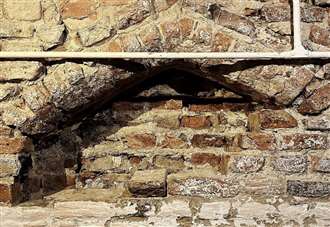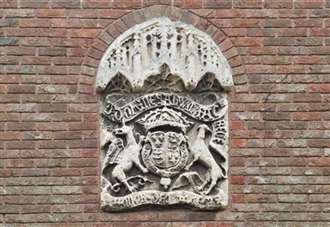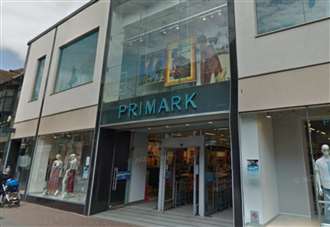-
 play_arrow
play_arrow
Kl 1 Radio Local radio for west Norfolk
-
 play_arrow
play_arrow
KL DISCO KL Disco Playing Disco Music from the 70's onwards.24/7
-
 play_arrow
play_arrow
KL COUNTRY KL COUNTRY Playing New and Classic Country Music 24/7
-
 play_arrow
play_arrow
KL ROX KL ROX The best of New and Classic Rock.24/7
-
 play_arrow
play_arrow
KL SUMMER Summer Vibes 24/7 from KL1 Radio across West Norfolk
-
 play_arrow
play_arrow
KL CLASSICAL Your Symphony Starts Here
-
 play_arrow
play_arrow
KL CHILL Just Chill!
-
 play_arrow
play_arrow
KL POP The Best POP Hits all day Long!
-
 play_arrow
play_arrow
KL XTRA KL XTRA
music_note

Another “mind-boggling” discovery believed to be from Shakespeare’s time has been made at Lynn’s St George’s Guildhall.The team at the oldest working theatre in the UK believe that they have found a 600-year-old doorway that may once have led to William Shakespeare’s dressing room.It comes after they identified floorboards believed to have formed part of a stage once trodden by the Bard last year.
St George’s started out life as a religious Guild meeting house, confirmed by the Royal Charter in 1406, but it went on to become a theatrical venue.The theatre’s first recorded performances were in 1445, before the birth of Shakespeare – who was baptised in 1564 and died in 1616.The Grade I listed building is the only working theatre in the world that can claim Shakespeare himself performed there.
This year, further archaeological investigations have been carried out at the theatre, sparked by a strange shape in a ground-floor wall. Tim FitzHigham, creative director of St George’s Guildhall, described what was found behind the plasterboard as “mind-boggling”.Two noticeboards were removed, exposing an 18th century wall, and as bricks from this wall were removed a much earlier archway was revealed. Mr FitzHigham said the archway “has got to be pre-1405 as the hall’s medieval roof is held up above it”.
“Further exploratory work identified the arch as the door to what is believed to be the Guild Robing Room,” he said.“This room was used by the highest level of Guild members to dress in their finery before feasting upstairs.“The Guilds, akin to 1400s membership clubs, ceased using the hall, and the room likely took on the role of a dressing room or ‘tiring house’ for visiting actors.”
During the Elizabethan period, the tiring house would have been used by actors changing and collecting props. In Shakespeare’s time, the Guildhall was used extensively by touring companies.Queen Elizabeth’s Men, a troupe of actors formed at the command of the Tudor Queen in 1583, performed there 10 times in the late 1500s.In 1592-3 London’s theatres were closed because of another outbreak of plague and Shakespeare and his company of actors were on tour in Lynn.A note in the corporation of Lynn’s account book shows Shakespeare’s company was paid by the corporation to perform there. This is not the only link to the famous playwright.
Robert Armin, who was Shakespeare’s leading comic actor and played comedy parts such as the Porter in Macbeth, the Gravedigger in Hamlet, Feste in Twelfth Night, and the Fool in King Lear, was born in the town, one street away from the theatre. There is also evidence, in a book published during Shakespeare’s lifetime, of an incident that occurred at the Lynn theatre where an audience member watching a play about a murder on stage was so consumed with guilt she confessed to killing her own husband.It is said that this incident inspired Shakespeare to write part of the plot of Hamlet with the Murder of Gonzago/Mousetrap scene.“This is another mind-boggling discovery at the Guildhall,” said Mr FitzHigham.“We’ve got a door that would definitely have been here in the years we think Shakespeare played here and, in all likelihood, was the door to a room where the players changed and stored props. “It is simply staggering that again a slight hunch or weird shape in the wall has turned out to be something frankly extraordinary.”The work to reveal the archway was carried out in collaboration with archaeologist Dr Jonathan Clark, specialist plaster remover Paul Wooles, West Norfolk Council, and the National Trust.Dr Clark’s research may also have pinpointed the location of a stairway that once connected to the tiring house.Dr Clark said: “This 15th century doorway appears to have provided access to a medium-sized low-status room, and not to have ever had a door closing up the arch; it may have been made private with a simple hanging when required. “It is the type of room where travelling groups of players might change due to its location within the Guildhall.“It would have given them a private space where they could put things, change and then travel up the staircase to appear on the first floor in their costume.”St George’s Guildhall is Grade I listed and is described as the largest intact medieval guildhall in England.A transformational project of the Guildhall is expected to bring millions of pounds into West Norfolk’s economy and create international interest in Lynn – after the plans were officially endorsed earlier this month. Estimates predict that following the redevelopment, which is supported by funding from the Towns Dund, footfall and customer spend could help to generate around £30million for the local economy, as well as the formation of a new creative hub on the site.Those involved say the ambition for the site is to make it a place for the whole community, incorporating low-cost tickets for residents and school visits, building on the work with schools that has already begun.At the heart of the plans for the Guildhall site is developing the venue’s Shakespeare connections.
Similar posts
-

Upcoming shows

Night Trax
1:00 am - 6:00 am

Weekend Back Trax
6:00 am - 8:00 am

Kelvin Scott – Weekend Breakfast
8:00 am - 11:00 am

Richard Tree – Sunday Swing Thing
11:00 am - 1:00 pm

Darren Furzey – Classic Hit Weekend
1:00 pm - 3:00 pm
-

Linnets face away play-off after Chester defeat at Walks

Presidents prime ministers and cardinals gather for funeral of Pope Francis

Town clothing store soon to get click and collect service

Knife offender breached court order because his ankle tag caused him ‘injury’

Have a crack at the toughest pub quiz on the internet
Message Us
Copyright The Mediasite UK - 2025


